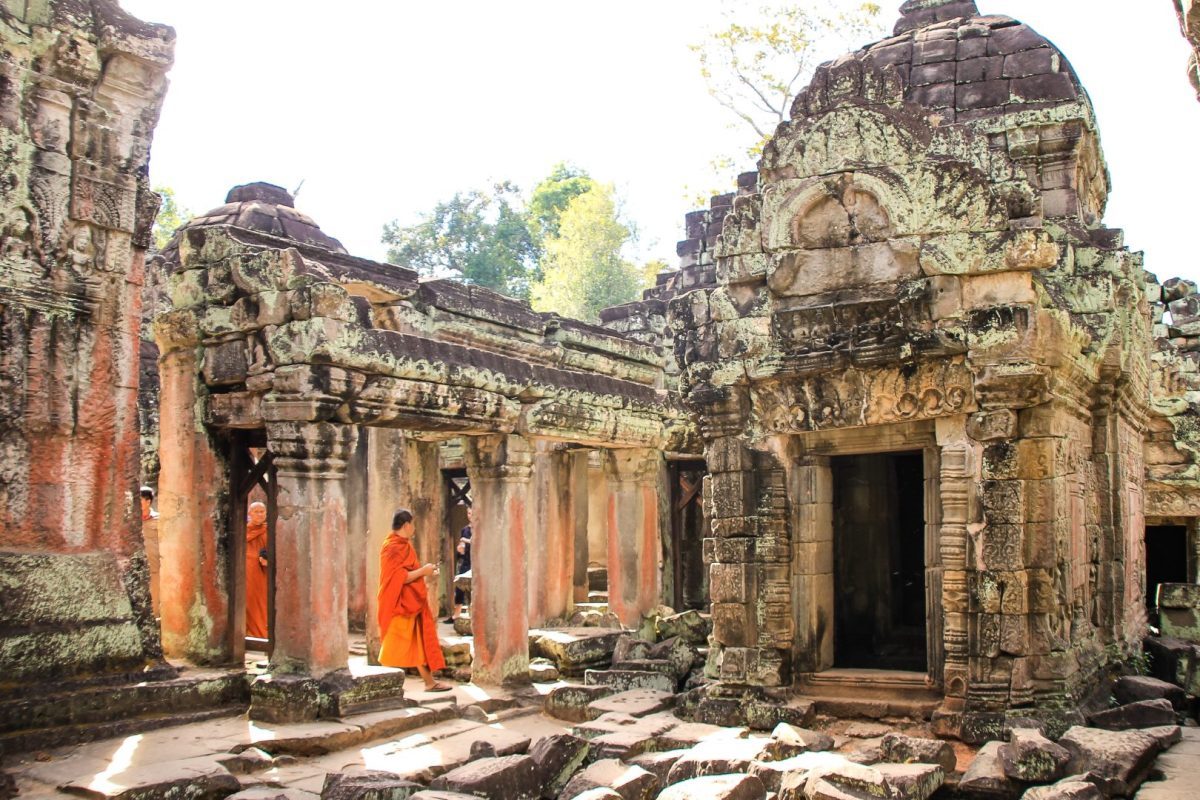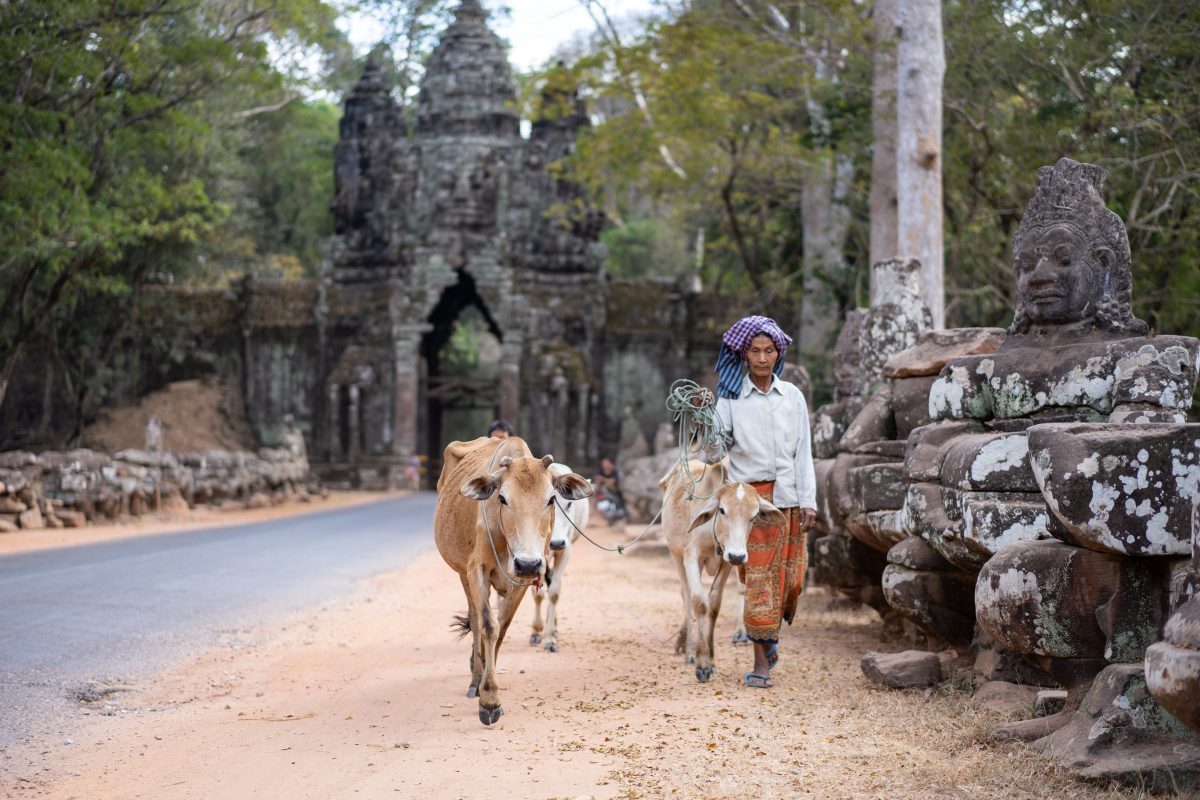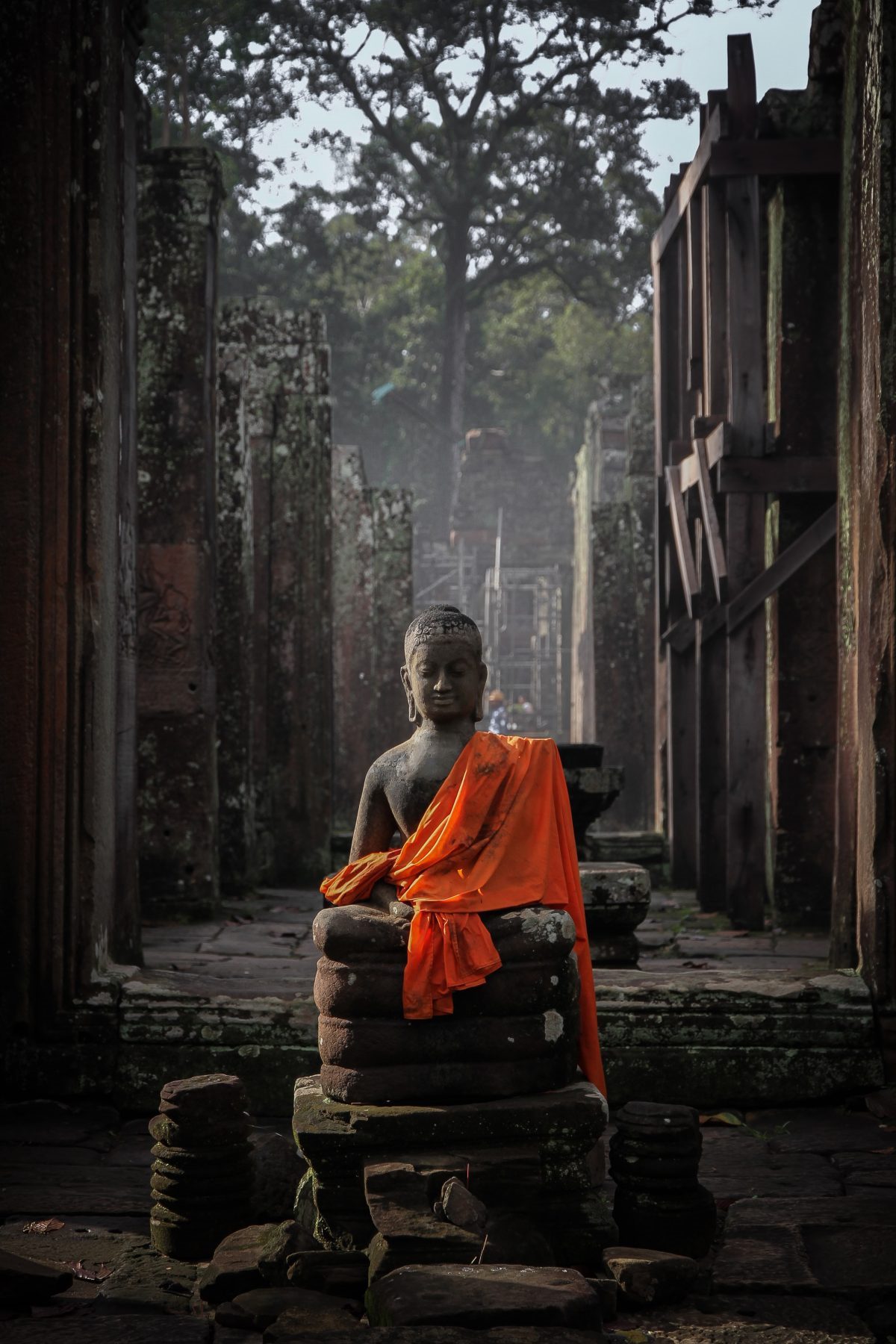How to Plan Your Kampong Phluk Floating Village Killing Field and Old Market Tour in Siem Reap
Siem Reap is a popular tourist destination for its most famous attraction the Angkor Wat. However, there are many other places to explore in the city. A day trip to Kampong Phluk Floating Village, Killing Field, and the Old Market is ideal for those who want to explore the history and culture of Cambodia. This tour is suitable for travelers of all kinds of interests, with comfortable air-conditioned transportation and knowledgeable English-speaking guides. This guide will provide you all the necessary information to plan your Kampong Phluk Floating Village Killing Field and Old Market Tour in Siem Reap.Overview
This is a full-day trip to the Kampong Phluk Floating Village, Killing Field, and Old Market. The tour is designed to explore the local livelihoods, history, and culture of Cambodia. The tour guide will lead you through the journey, giving you insightful information and answering your questions.Itinerary
The tour starts early in the morning at 8:00 AM with a pick-up from your hotel lobby. It is essential to inform the tour company of your hotel address. An air-conditioned vehicle, either a car or minivan, will be your transportation for the day. The tour guide will provide you with all the information you need about each destination on the way.Kampong Phluk Floating Village
Your first destination on this day trip will be Kampong Phluk Floating Village. It is about 16 kilometers to the southeast of Siem Reap town. Kampong Phluk is a cluster of three villages, each with a distinctive character, and is located on the Tonle Sap, the largest freshwater lake in Southeast Asia. The lake ecosystem and environment of the village are impressive and worth exploring. During the wet season, the houses appear to be floating on the water. Here you will also have a chance to take a boat ride and explore the lifestyle and culture of this village. The entrance fee to the village is included in the tour.The Killing Field
After exploring the floating village, you will go on to The Killing Field. It is a notorious site related to the darkest period of Khmer Rouge History, where the Khmer Rouge regime executed thousands of people in the late 1970s. The Killing Field is now a memorial site with a stupa filled with skulls and bones, a sad and tragic reminder of the atrocities that were committed at this site. A visit to this place educates us on the importance of safeguarding human rights and giving respect to the victims’ memory. The ticket fee for the War Museum is $5 USD per person and is not included in the tour.The Old Market
After the emotional experience at the Killing Field, your final destination on this tour will be the Old Market. Located in the city center of Siem Reap, it gives you a glimpse into the local lifestyle, food culture, and the daily routine of Cambodian people. Here you can find all kinds of souvenirs, traditional crafts, clothes, jewelry, and food products at a reasonable price. The market has stalls and vendors selling everything from fresh fruits and vegetables, clothes to electronics, and souvenirs. You can enjoy a taste of traditional Khmer street food here as well.What’s included
The tour includes an air-conditioned vehicle, a cruise ride, and entrance fees to Kampong Phluk, English-speaking tour guide, and food and drinks. However, the ticket fee for the War Museum is not included in the tour.Book Your Tour Now
Planning for the Kampong Phluk Floating Village Killing Field and Old Market Tour in Siem Reap has been made easy as you now have all the necessary information. This tour is an opportunity to gain an understanding of Cambodian history, lifestyle, culture, and cuisine. It is also a chance to meet locals and interact with them. The tour will take the entire day, so choosing comfortable clothing, sunscreen, and a hat are the things to take into account. Book the tour here and be ready for an unforgettable experience in Siem Reap.
Siem Reap: Your Ultimate Guide
Siem Reap, a city located in northwest Cambodia, is an increasingly popular tourist destination that has a lot to offer. From the famous Angkor Wat temple to floating villages and natural wonders, Siem Reap offers an array of experiences that cater to different interests. If you’re planning a trip to Siem Reap, this ultimate guide will answer some of the most frequently asked questions about the city and prepare you for an unforgettable adventure.1. What is the best time to visit Siem Reap?
Siem Reap has a tropical climate, with temperatures ranging from 25 to 35 degrees Celsius. The best time to visit Siem Reap is during the dry season from November to April when the weather is sunny and the humidity is relatively low. However, this is also the peak tourist season, and you may encounter large crowds of visitors. If you prefer less crowded and more affordable options, consider visiting during the wet season from May to October. Despite occasional rain showers, you can still enjoy Siem Reap’s attractions, and the lush vegetation and fewer visitors can make for a unique experience.2. What are the must-see attractions in Siem Reap?
The most iconic attraction in Siem Reap is Angkor Wat, a stunning temple complex that dates back to the 12th century. It is the largest religious monument in the world and a UNESCO World Heritage site. Other noteworthy temples in the area include Angkor Thom, Ta Prohm, and Banteay Srei. Another popular attraction is the Tonle Sap Lake, a vast freshwater lake and the largest one in Southeast Asia. You can visit floating villages that are built on stilts and learn about the daily lives of the locals. Preah Khan, an archaeological site that was once a temple and a university, is also worth a visit.3. What are the best activities to do in Siem Reap?
Apart from visiting the famous temples, Siem Reap offers a variety of activities that cater to different interests. You can go on a cycling tour through the countryside, visit a silk farm or a rice-paddy field, or enjoy a hot-air balloon ride over Angkor Wat. For adventure seekers, Siem Reap has zip-lining and trekking tours, as well as quad bike tours that allow you to explore off-the-beaten-path areas. If you want to learn more about the local culture, you can attend an Apsara dance performance, a traditional dance that depicts Cambodian folklore, or take a cooking class and learn how to prepare some of the Cambodian cuisine’s signature dishes.4. What are the accommodation options in Siem Reap?
Siem Reap has a wide range of accommodation options that cater to different budgets and preferences. You can choose from luxurious five-star hotels, boutique hotels, guesthouses, or hostels. The most popular areas to stay in Siem Reap are the city center, which is within walking distance of many attractions and restaurants, and the areas near the Angkor Wat temples, which offer stunning views and a peaceful ambiance.5. What are the transportation options in Siem Reap?
Siem Reap has several transportation options to help you get around the city and its surroundings. Tuk-tuks are the most popular mode of transportation, and you can easily hail one on the street or through your hotel. They are affordable, and the drivers are usually familiar with the city’s main attractions. Bicycles and motorbikes are also available for rent if you prefer a more active and independent mode of transportation. However, be extra cautious if you decide to rent a motorbike, as the roads can be challenging and unpredictable.6. What are the do’s and don’ts of Siem Reap culture?
Cambodian culture has its own unique customs and traditions, and being aware of them can help you have a more respectful and enjoyable trip. Here are some do’s and don’ts to consider: Do dress modestly when visiting temples or other religious sites. Cover your shoulders, knees, and chest. Don’t point your feet or touch someone’s head. In Cambodian culture, the head is considered sacred, and the feet are seen as the lowest part of the body. Do remove your shoes before entering a temple or someone’s house. Don’t raise your voice, lose your temper, or show anger in public. Cambodian culture values harmony, and being polite and respectful is essential.7. What are some safety tips for traveling to Siem Reap?
Siem Reap is a relatively safe city for travelers, but as with any destination, it’s best to take precautions to ensure your safety. Here are some tips to consider: Be cautious when using ATMs, and avoid using them late at night or in remote areas. Be aware of your surroundings, especially at night or in crowded places. Avoid wearing expensive jewelry or displaying large sums of cash. Always negotiate the prices of tuk-tuks or other transportation before getting in. Carry a photocopy of your passport and keep the original document in a safe place.8. What are the best restaurants in Siem Reap?
Siem Reap has a vibrant food scene that showcases Cambodia’s delicious cuisine. From street food stalls to high-end restaurants, you’ll find something to suit your taste buds. Some of the most popular restaurants in Siem Reap include: – Marum, which serves Cambodian cuisine and supports local charities – Abacus, which offers a fusion of Asian and European cuisine – Cuisine Wat Damnak, which serves high-end Cambodian cuisine – The Sugar Palm, which serves traditional Khmer dishes9. What are the best shopping options in Siem Reap?
Siem Reap has several shopping options where you can buy souvenirs, handicrafts, and local products. Some of the best shopping areas in Siem Reap include: – Old Market and Night Market, where you can find clothes, jewelry, paintings, and souvenirs – Artisans Angkor, a handicraft center that promotes traditional Cambodian arts and crafts – Made in Cambodia Market, which sells artisanal products made by Cambodian designers and entrepreneurs10. How can I be a responsible traveler in Siem Reap?
Being a responsible traveler can help you leave a positive impact on the local community and environment. Here are some tips to consider: Avoid participating in activities that exploit animals, such as elephant rides or crocodile farms. Respect local customs and traditions, and avoid disruptive behavior. Buy locally made products and support local businesses. Reduce your plastic waste and carry a refillable water bottle and a reusable bag. Consider volunteering or supporting a local charity that supports education, healthcare, or the environment. Siem Reap is a destination that offers something for everyone. Whether you want to immerse yourself in history and culture, adventure and outdoor activities, or relax and savor Cambodian cuisine, Siem Reap has it all. By following these tips and being mindful of local customs and traditions, you can have a memorable and responsible trip to Siem Reap.
How to Spend Your Time as a Tourist in Siem Reap – A Complete Guide
Siem Reap is an idyllic city filled with magnificent temples, rich history, and amazing cultural sites. As a tourist, you can make the most of your time exploring the Khmer heritage, indulging in Cambodian cuisine, shopping at traditional markets, and enjoying the nightlife. In this guide, we will provide comprehensive information about the top things to do in Siem Reap, so that you can plan your trip accordingly.1. Visit Angkor Wat
Angkor Wat is perhaps the most iconic landmark of Cambodia and is undoubtedly one of the most impressive religious sites in the world. Built-in the 12th-century by King Suryavarman II, this Hindu temple was later converted to a Buddhist temple. The temple complex spreads over 400 square kilometers and features a multitude of temples, pagodas, and other structures. The intricate carvings and sculptures of the temples are a visual treat for history buffs and art enthusiasts.Tip:
Visit the Angkor Wat during the early hours of the morning to catch the sunrise, as the temples look even more stunning during the early hours.2. Explore the Bayon Temple
The Bayon temple is located within the Angkor Thom temple complex and is known for its magnificent towers featuring giant smiling faces. Built in the late 12th century by King Jayavarman VII as the state temple of the Mahayana Buddhist empire, this temple is a must-visit for those who are fascinated by ancient architecture and culture.Tip:
Take time to discover the intricately carved murals and bas-reliefs within the Bayon Temple’s towers. Also, try to visit the temple during sunset when the light is not too harsh, and the carvings look even more stunning.3. Enjoy a Traditional Apsara Performance
The Apsara dance is a traditional Cambodian dance that is a combination of intricate hand movements, slow-motion gestures, and elegant postures. This ancient dance was once performed exclusively for kings and emperors, and today it’s a popular tourist attraction in Siem Reap.Tip:
You can enjoy a traditional Apsara dance performance while relishing the taste of classic Khmer cuisine in one of the many restaurants in Siem Reap.4. Visit the Banteay Srei Temple
The Banteay Srei temple is a 10th-century temple located far from the main Angkor temple complex. It is known for its intricate carvings, and its pink sandstone construction makes it a unique architectural beauty. The temple is small in size, but it’s incredibly well-preserved and offers a lot to see and appreciate.Tip:
Visit the temple in the morning to avoid the crowd and take a guide who knows the temple’s history and architecture.5. Explore the Cambodian Landmine Museum and Relief Center
Siem Reap has a troubled past with landmines, and the Cambodian Landmine Museum is a must-visit destination to understand this dark period of Cambodian History. The museum showcases artifacts, weapons, and landmines from the Khmer Rouge regime and educates visitors about the detrimental impact of landmines.Tip:
Skip the tuk-tuks and take an ATV tour to reach the museum, and go early in the day to avoid the crowds.6. Take a Cooking Class
Cambodian cuisine is delicious, and you can learn how to make traditional Cambodian dishes by taking a cooking class while you’re in Siem Reap. The class usually includes a visit to the local market, where you can learn about Cambodian ingredients and how to source them.Tip:
Choose a cooking class that uses locally sourced ingredients, which is better for the environment and supports the local economy.7. Visit Phnom Kulen
Phnom Kulen is a mountain range located about 50 kilometers north of Siem Reap. This mountain range is significant for Cambodian history, and it’s a stunning natural beauty with waterfalls, forests, and wildlife.Tip:
Hire a local guide to take you to the top of Phnom Kulen, where you can see the thousand Lingas riverbeds known for their spiritual significance in Cambodian culture.8. Shop at the Old Market
The Old Market, also known as Phsar Chas, is a bustling and colorful marketplace that gives visitors a glimpse into the authentic Siem Reap lifestyle. It’s the perfect place to buy local artisan crafts, textiles, souvenirs, and fresh produce.Tip:
Haggle with the local vendors to get the best deals, but remember to be respectful and always stay polite.Book Your Tour Now
Siem Reap is a city full of cultural landmarks, natural beauty, and incredible food. With our guide to the top things to do and see in Siem Reap, you can make the most of your trip and create unforgettable memories. Whether you learn about the history and culture of Cambodia or simply take in the natural beauty of the area, this city has something for every type of traveler.Table of Contents

